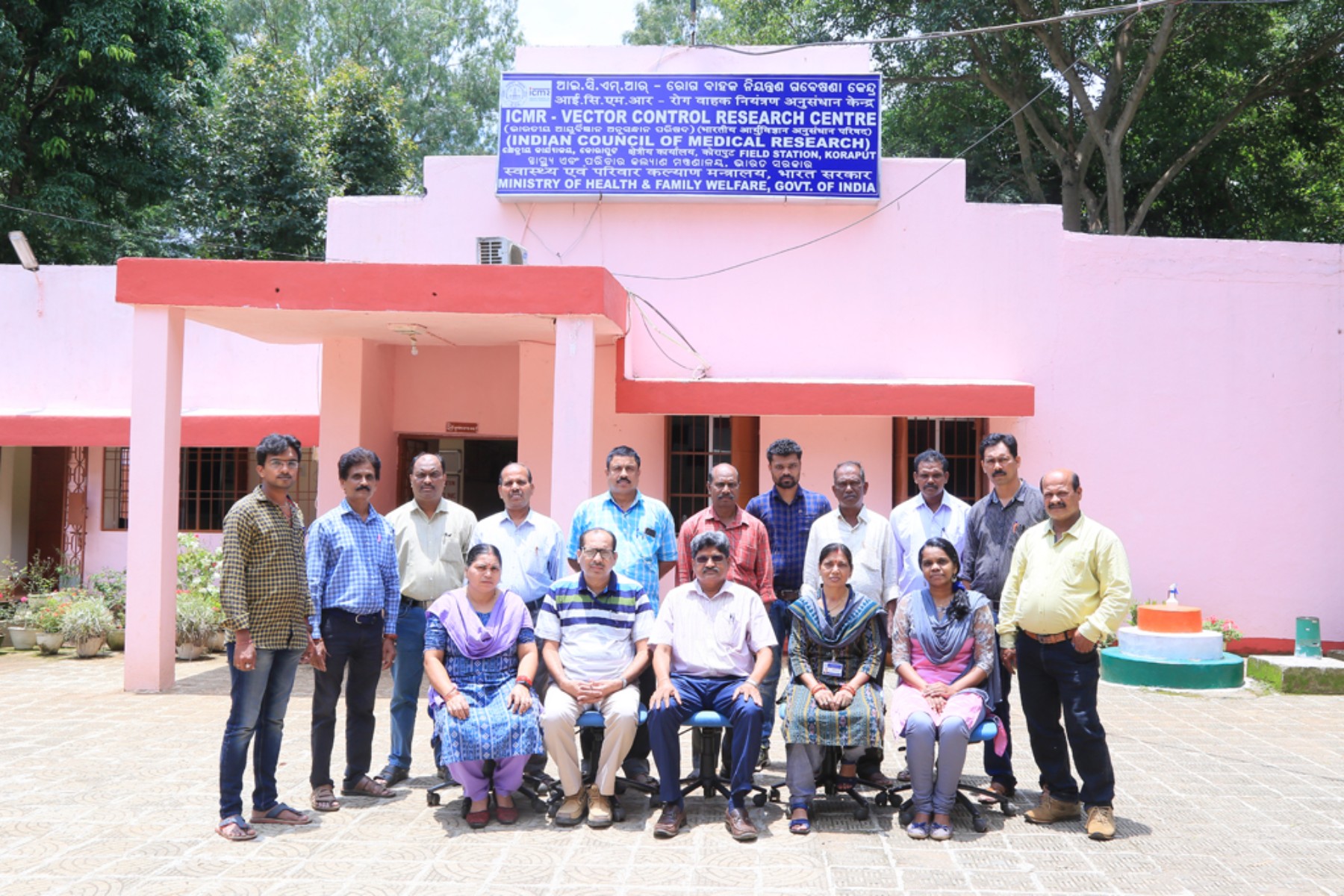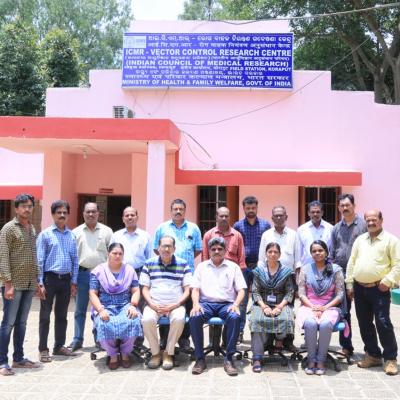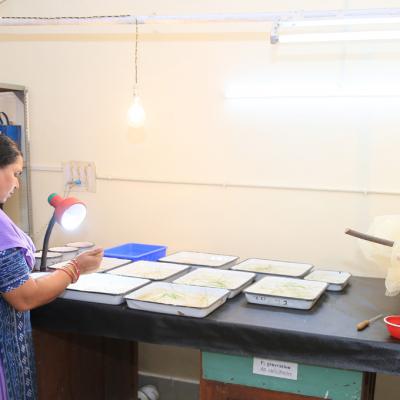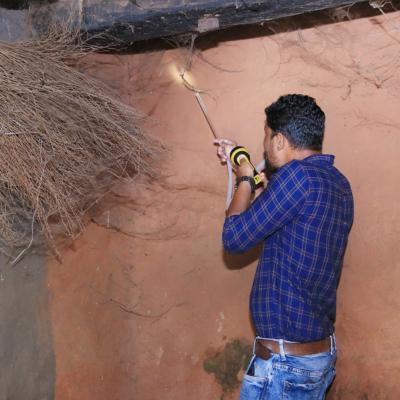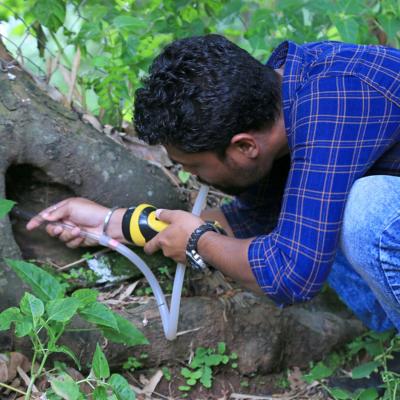Research activities
The Field Station has undertaken the studies on following aspects and the study findings were published in various national and international journals. So far, 91 papers were published.
Vector bionomics in relation to transmission or persistence of malaria
- > Anopheline fauna
- > Morphological variance of malaria vectors
- > Resting behaviour of An. fluviatilis, An. culicifacies, An. minimusand An. annularis
- > Breeding behaviour of An. fluviatilis, An. culicifacies, An. minimusand An. annularis
- > Seasonal prevalence of An. fluviatilis, An. culicifacies, An. minimusand An. annularis
- > Dispersal of An. fluviatilis
- > Biting behaviour of An. fluviatilis, An. culicifacies, An. minimus and An. annularis
- > Vectorial capacity of malaria vectors i.e. An. fluviatilis, An. culicifacies, An. minimus and An. annularis
- > Selection and application of sampling methods for collection of anophelines
- > Susceptibility status of malaria vectors to DDT,BHC and malathion
- > Vector competence of nine anopheline species to human Plasmodia.
- > Studies on the distribution, behaviour and vector competence of An. jeyporiensis
- > Differentiation of the sibling species of An. fluvaitilis complex based on variations in the ITS2 region of ribosomal genes.
- > Distribution of An.fluviatilis and An. culicifacies sibling species and malaria transmission in different eco-topes of Koraput and Malkangiri district.
- > Characterization of An. fluviatilis complex by cyto-taxonomy.
- > Re-appearance of An.minimus in Singhbhum hills, East Central India.
- > Morphological and molecular characterization of An .minimus and An. fluviatilis.
- > Studies on underlying mechanism of insecticide resistance in the field populations of An. fluviatilis, An. culicifacies and An.annularis, the malaria vectors in India.
- > Distribution and bionomics of malaria vectors with special reference to An. minimus (Theobald), in relation to malaria transmission in Singhbhum hills (Keonjhar dist.)India.
- > Bionomics of malaria vectors in 10 southern districts of Odisha state
Epidemiology of malaria
- > Distribution of P.ovale
- > Distribution of malaria and sickle cell trait
- > Determination of effective single dose chloroquine treatment
- > In-vivo for chloroquine sensitivity in P.falciparum in Malkangiri and Koraput district
- > Study on the impact of irrigation projects on malaria
- > Estimation of inoculation and recovery rates among infants by using catalytic methods
- > Studies on the overlap of clinical presentation of malaria and acute respiratory infection in children under five years of age in malaria endemic areas.
- > Therapeutic efficacy of ACT
Vector control strategy and evaluation of newer vector control tools
- > Trials with bed-nets impregnated with lambdacyhalothrin in Koraput and Malkangiri districts.
- > Effect of Bt. and Bs. formulation against Anopheline species
- > Impact of indoor DDT residual spraying on density, longevity and behaviour of malaria vector where mud-plastering is deferred.
- > Malaria control through primary health centre with emphasis in drug distribution and community participation
- > Village scale trail on the relative efficacy of the use of insecticide impregnated bed nets and eave curtains against an endophilic vector species.
- > Malaria control in Malkangiri district through strengthening the traditional health care personnel (Traditional healers).
- > Impact of Alphacypermethrin treated mosquito nets against malaria vectors.
- > Impact of indoor residual treatment of Bendiocarb against malaria vectors.
- > Operational feasibility and acceptability of insecticide-treated mosquito nets for malaria control in a tribal PHC area in Koraput district, Orissa.
- > Phase-II evaluation of two formulations of deltamethrin WDP and WDG against malaria vectors.
- > Impact of DDT and Malathion indoor residual spraying used in malaria and Kalajar control programmes on the disease prevalence.
- > Impact of ICON 2.5 CS formulation of lambdacyhalothrin treated mosquito nets against malaria vectors.
- > Acceptability of long-lasting treated net (LLTN) by tribal community.
- > Demonstration and evaluation of Integrated Vector Management (IVM) in a fluviatilistransmitted falciparum malaria hyper-endemic tribal area
- > Phase II evaluation of (experimental hut trial) five types of Long Lasting Treated Nets (Olyset, , Net Protect, Interceptor, PermaNet and DuraNet) against malaria vectors in a tribal malaria endemic area
- > Phase II evaluation of (experimental hut trial) LifeNet,Olyset Plus, MAGNet, DawaPlus and Veeralin against malaria vectors in a tribal malaria endemic area
- > Anopheles fluviatilistransmitted falciparum malaria control in a tribal area of India: a rationalized approach
- > Phase III evaluation to compare insecticidal efficacy and household acceptability of Icon Maxx, a long-lasting treatment for nets, with conventional insecticide treated nets in India
- > Demonstration and evaluation of Integrated Vector Management (IVM) in a malaria endemic tribal Block of Odisha, India
- > Comparative efficacy of two rounds of indoor residual spraying of DDT 75% @ 1g/m2 with that of DDT 50% @ 1g/m2 against the malaria vectors in India
- > Environmental management through sluice gated bed-dam: a revived strategy for the control of Anopheles fluviatilis breeding in streams
- > Susceptibility/resistance status of Anopheles fluviatilisand An. culicifacies to DDT, malathion and Deltamethrin in ten southern districts of Odisha state

